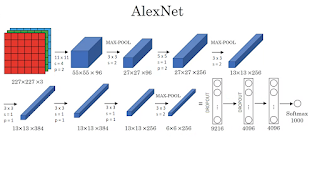VGGNet: Very Deep Convolutional Networks

With the advent of AlexNet, all the submissions to the ImageNet Large Scale Visual Recognition Challenge (ILSVRC) switched over to using convolutional neural networks. In 2013, the winner of this challenge was ZFNet, a modified version of AlexNet which gave better accuracy. It was also an 8-layer network that tweaked some of the layer configurations of AlexNet by trial and error. ZFNet used 7 $\times$ 7 sized filters in the first layer with a stride of 2 instead of 11 $\times$ 11 filters with a stride of 4. The intuition behind this is that we were losing a lot of pixel information (aggressively downsampling the input), which can be retained by having smaller filter sizes and small strides. The padding is removed for the first two conv layers (to match the subsequent conv layers shapes of AlexNet). With just these two changes, they are able to achieve a reasonably large increase in performance over AlexNet. AlexNet or ZFNet were designed in somewhat an ad-hoc manner with s...
